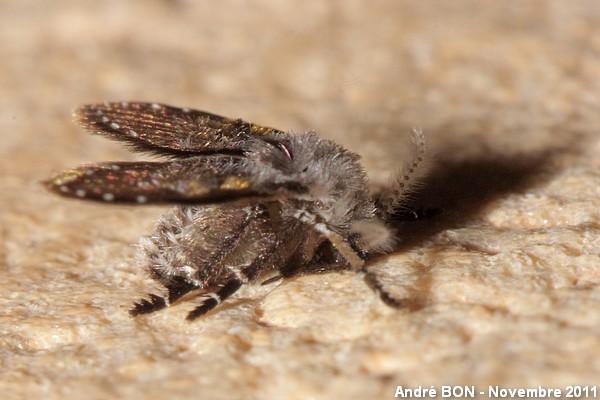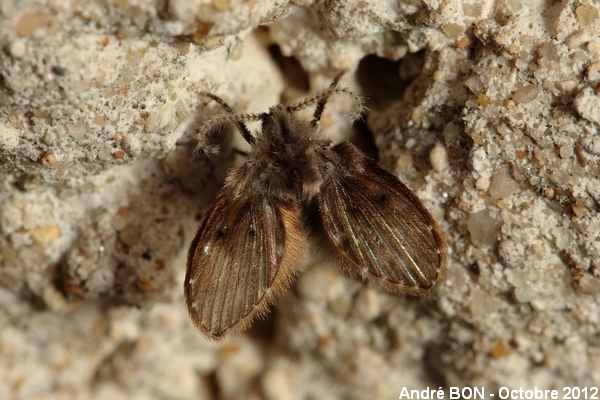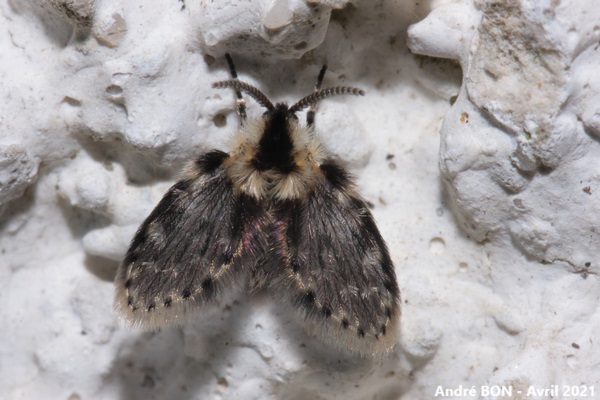



| Moth Midge (Clogmia albipunctata (Williston, 1893)) |




|
|
Scientific name: Clogmia albipunctata (Williston, 1893) Common name: Moth Midge Other names: Bath Fly French name: Clogmia albipunctata Order: Diptera Family: Psychodidae Wingspan : 3-5 mm. Biotope: Damp rooms and places in human buildings, kitchens, bathrooms, sewers, sewage. Tree holes filled with water in tropical regions. Geographic area: Whole world in tropical and temperate regions. The range is expanding northwards. Observation period : All year. |
The Moth Midge looks like a small greyish brown moth with rounded hairy wings. It is often observed landed on a wall with its wings held parallel to the support. The antennae are long and bear whorled setae on each article. There is a white dot at the end of each longitudinal vein on the wings. There are two half white-half black spots at one third of the wing length starting from the base. The vein, under the spot which is closer to the costal edge, is reddish brown near this spot. There are also some sparse white hairs across the wing at mid-length forming some kind of a V-shape. The thorax is very hairy. Psychodidae of the Psychoda genus are used to landing with their wings held roof-like over the body. Psychodidae of the Clogmia genus are used to landing with the wings held flat, that's to say parallel to the support. Psychodidae of the Pericoma genus often show very hairy wings with dark and contrasted colours. The wings are more shiny on flies of the Clogmia genus. |
| [To know more about the Moth Midge] [Next picture] [Top] |

|
I have shot this picture of Clogmia albipunctata in the kitchen. I have read that there is no possible confusion except in tropical areas. |
| [To know more about the Moth Midge] [Next picture] [Previous picture] [Top] |

|
It is not so easy to position in the right axis for a nice side view. |
| [To know more about the Moth Midge] [Next picture] [Previous picture] [Top] |

|
This times I have shot this picture outside the house. |
| [To know more about the Moth Midge] [Previous picture] [Top] |

|
New sighting outside the house. I am not too worried about possible stagnation of sewage because I only observe this species very sporadically and in isolation. |